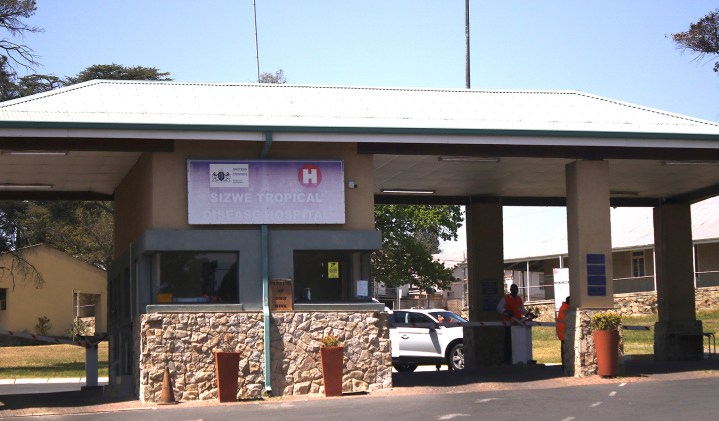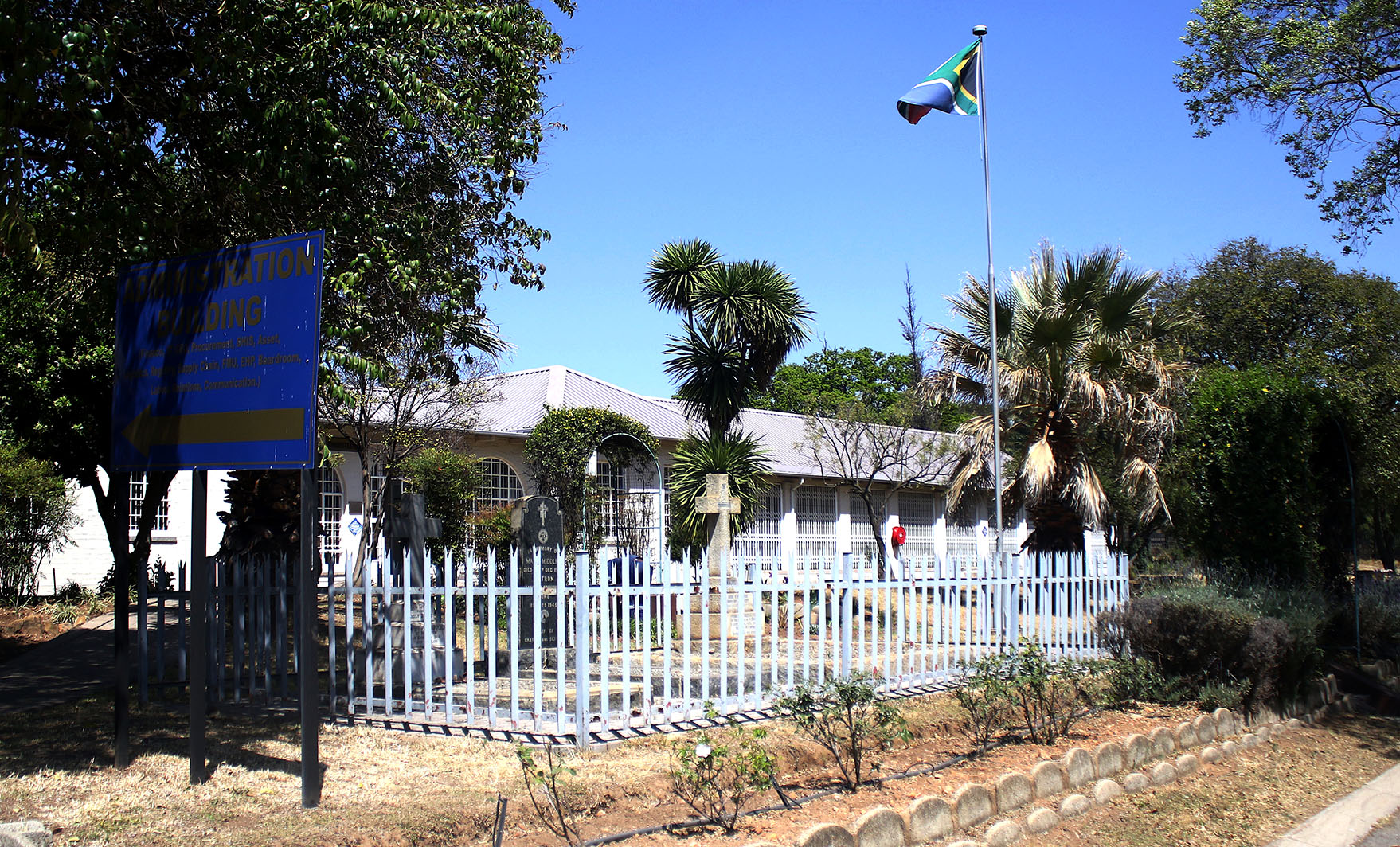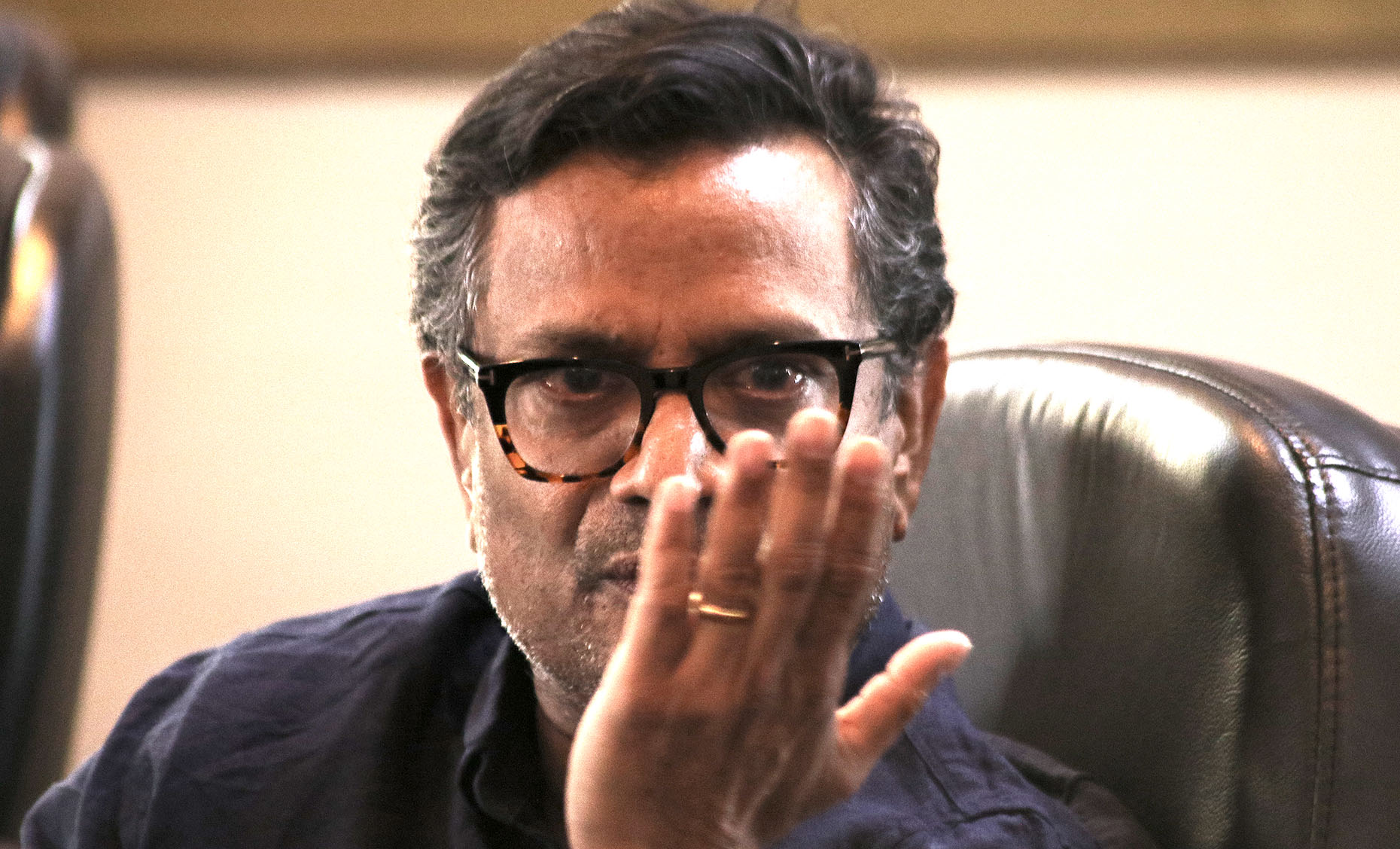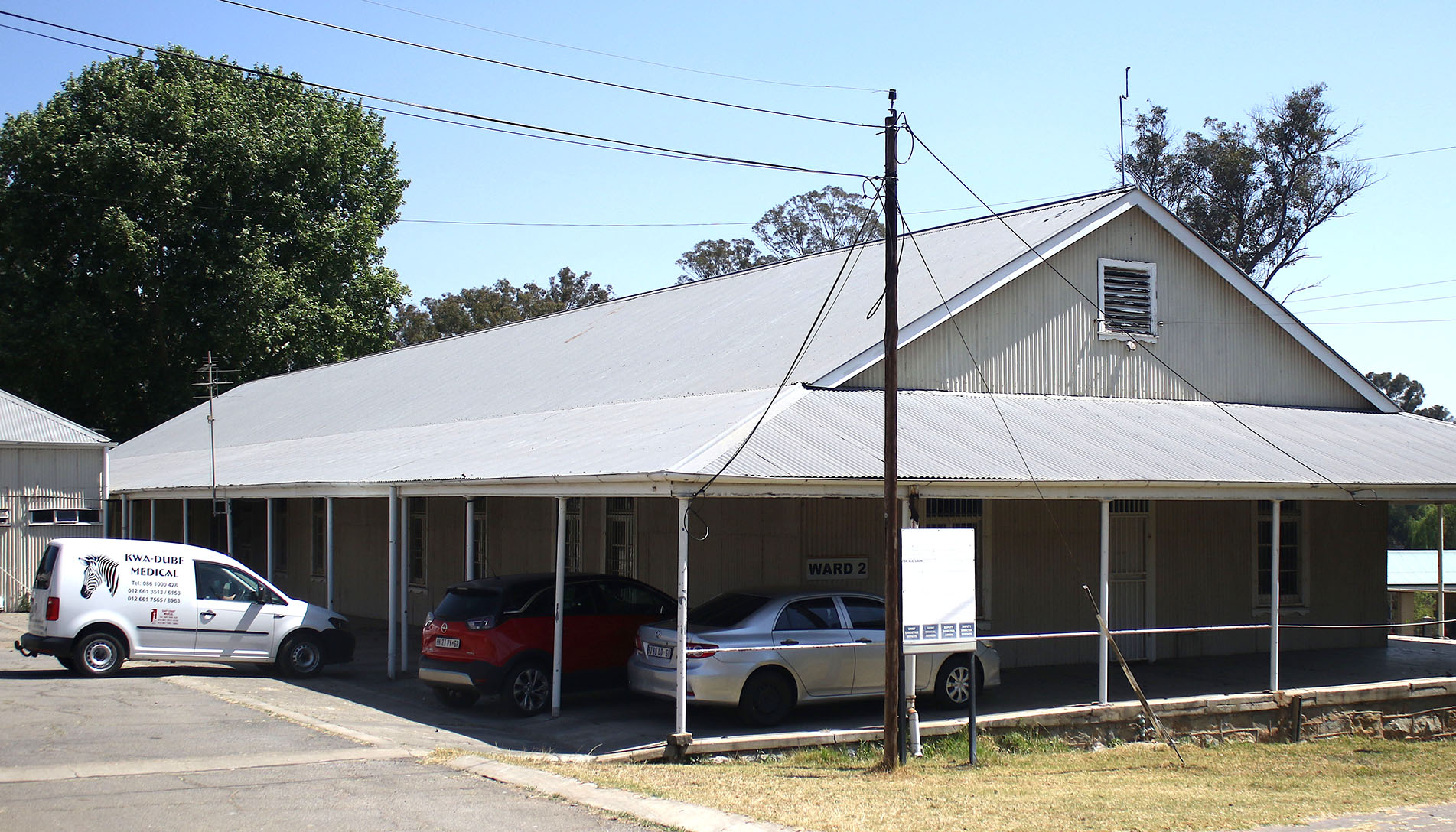SPOTLIGHT
Hospital histories – Sizwe, where lives have been saved since Joburg’s early days

For the past 128 years, a hospital tucked away on what was once a rural farm in Johannesburg East has been fighting to turn the tables on a disease that has plagued humankind for millennia. Ufrieda Ho has the latest in Spotlight’s special series of ‘Hospital Histories’.
How the story of a frustrated TB patient raging at doctors and nurses with a knobkierie in hand transformed into a story with a happy ending, sums up a TB hospital where infectious diseases have been treated since 1895.
It was the late 2000s and the first cases of XDR-TB (extensively drug-resistant tuberculosis) had started to surface in South Africa.
Patient H, diagnosed with such a dangerous form of the infectious disease, was referred to the Sizwe Tropical Diseases Hospital on the eastern edge of Johannesburg. Doctors knew they were up against the sobering reality of a 90% mortality rate. Patient H knew it too.
“As the time went by, he would fight with the staff and get quite aggressive. He even tried to mock-attack us with a knobkierie. Then he begged us to let him leave. He said he would rather die at home because he didn’t have a chance of surviving,” says Dr Rianna Louw, CEO of Sizwe Hospital. “We had to calm him down and we had to win his trust to make him stay and tell him we were going to try everything to help him, and we did. He was cured, discharged, and went on to get a job and to live his life,” Louw adds.

Dr Rianna Louw, CEO of Sizwe Hospital. (Photo: Denvor de Wee / Spotlight)
Sizwe receives patients with the most complex cases of drug-resistant TB and has since 2007 been a dedicated MDR (multidrug-resistant) and XDR TB hospital. Back in its early days, it admitted patients with every kind of infectious and tropical disease, including anthrax, smallpox, bubonic plague, typhoid, Congo fever and, of course, TB.
Since Joburg’s earliest days
The hospital came into being in the decade after Johannesburg was proclaimed a city in 1886. The infectious sick were sent to the “Rietfontein farm” on what were then the outskirts of the burgeoning gold rush dust bowl. Fresh air and open spaces of the farm were a mercy against the ravages of diseases for which there weren’t any cures.
Rietfontein farm would become Rietfontein Hospital and remained as such until it was renamed in the mid-1990s to Sizwe Tropical Diseases Hospital. Remnants of the old hospital are evident across the hospital grounds. The first “Florence Nightingale-style” ward – designed for long corridors of beds – with its original corrugated iron sheeting walls, large wooden windows and wide wraparound veranda, still stands, as does an old silo. There are also clusters of tombstones dating back more than 100 years on the surrounding grasslands. It’s believed there are several hundred more unmarked graves dotted across the large plot.
At Sizwe, survival is now above the national average at about 85% and the average time spent at the hospital is down to about two months.
Three headstones that are visible stand as memorials at the entrance of the main reception block on the hospital campus. There is the headstone of a nurse, Emily Blake, who died of the bubonic plague at the age of 27 in 1904. She is said to have contracted the disease when she kissed a sick child good night. There are also the headstones of Mary Middler, a matron who served for 19 years at the hospital, and Dr John Max Mehliss, the first superintendent of the hospital.

Rietfontein farm would become Rietfontein Hospital until it was renamed Sizwe Tropical Diseases Hospital in the mid-1990s Sizwe Tropical Diseases Hospital. (Photo: Denvor de Wee / Spotlight)
A long line
For Louw, walking to her office every day, the prominence of the headstones is a reminder that she and her colleagues come from a long line of people who are drawn to the distinct particularities of infectious disease care.
“Sometimes we say we have become infected with working to cure TB,” she says. “It is a passion. We do also think about what the nurses and doctors from those times went through because they didn’t have the same access to drugs, technologies or treatment guidelines, and protocols that we have now. We respect the special history at this hospital but we also don’t live in the past because things are always changing with TB – there’s always more that we can do,” she says.
Chief medical officer at Sizwe, Dr Xavier Padanilam, like Louw, has served at the hospital for 16 years. He says Sizwe Hospital has unique qualities, starting with being an unexpected urban oasis.

The headstones stand as memorials at the entrance of the main reception block on the hospital campus. (Photo: Denvor de Wee / Spotlight)
“Part of the surrounding area is a wetland – so everything just becomes green and lush by summer, which is one of my favourite things about Sizwe,” he says. As if on cue, the high-pitched squawk of a wild peacock pierces his sentence. The birdlife is diverse here and vervet monkeys, owls and bushbabies find sanctuary on portions of the farm not yet surrendered to suburban sprawl.
Padanilam says Sizwe is notable too as the hospital that cared for the late Archbishop Desmond Tutu when he contracted the disease as a teenager. Sizwe was also used as a location for scenes in the film version of Cry the Beloved Country.
New research into an old foe
Medically, Padanilam says, Sizwe stands out for its research collaborations into a bacterial disease that has been humankind’s constant dark shadow for millennia, but still undefeated.
The hospital is the site of “lots of studies”, he says. Its proximity to the National Health Laboratory Services across the road also means it has easy access to diagnostics, which is a critical element for knowing which TB treatments to use.

Nthabi Chaka is the occupational therapist at Sizwe Hospital. (Photo: Denvor de Wee / Spotlight)
Findings from research conducted at Sizwe Hospital have helped inform national and international TB treatment guidelines. “We’re at the top of our game”, Padanilam says. Drugs and diagnostics matter, he says, so do the roles of social workers, psychologists, physiotherapists and occupational therapists.
“TB has a slow progression and it can show up differently for each person and each person responds differently to different drugs,” he says of the complexities of treating drug-resistant TB. TB is still one of the top killers in South Africa, having claimed an estimated 56,000 lives here in 2021, according to the World Health Organization. It is estimated that 304,000 people fell ill with TB that year – 21,000 with drug-resistant forms of the disease.

Dr Xavier Padanilam is the chief medical officer at Sizwe Hospital. (Photo: Denvor de Wee / Spotlight)
But Padanilam says successes should be counted. Survival rates have improved and treatment times have contracted. At Sizwe, survival is now above the national average at about 85% and the average time spent at the hospital is down to about two months. The cost of treatment has also dropped considerably from the mid-2000s. Care and treatment for a single patient from the point of admission to being discharged could at that time add up to half a million rands per person, Louw says.
At the start of spring 2023, Sizwe had just more than 70 patients admitted. It’s a 202-bed hospital and has 427 staff members. Louw says the seemingly inverted patient-staff ratio has to be understood by the challenges of an infectious care hospital that has to limit “cross-contamination” by staff across the sections in the hospital. Staff numbers, she says, also include the entire staff complement that runs a village, which is what Sizwe Hospital resembles. She adds that they are also on alert for an expected post-Covid-19 spike. Pandemic lockdowns resulted in many more infected people not being diagnosed and treated early enough.
Going home TB-free
The “village” includes an outdoor gym, classrooms for TB-infected children, an open-air church, physiotherapy rooms and an activities centre. The centre is for leisure, but also occupational therapy sessions. One of the major challenges, Padanilam says, is finding ways to help patients fight boredom. Patients who start to feel well again often become agitated and want to leave, but they could still be infectious. And even when they can receive visits from friends and family, no one gets discharged until their final sputum cultures and blood work signal the all-clear.
Read more in Daily Maverick: Hospital histories – mental healthcare at Valkenberg today … and 130 years ago
On a warm Friday morning in spring, some patients are playing a game of pool in the activity centre. Someone else relaxes where sunlight meets a reading spot on a couch. There is a sewing corner and a display of items patients have made. There’s also a spot for beadwork and a small kitchen off to one side. This is the domain of Nthabi Chaka.
As the occupational therapist, Chaka works with patients to help them adjust to inpatient treatment with an eye on giving them enhanced everyday skills for when they return to their ordinary lives.

At the start of spring this year, Sizwe had just more than 70 patients admitted. (Photo: Denvor de Wee / Spotlight)

The play park. Some healthworkers say that one of the major challenges is finding ways to help patients fight boredom. (Photo: Denvor de Wee / Spotlight)
“Sometimes people are bored with hospital food or their medication makes them lose their appetite, so we make pizzas in the kitchen or we bake a cake together,” she says. Chaka says there’s a lot to balance on the road to recovery for TB patients. Up to 65% of patients at Sizwe are HIV positive, so it’s watching for the side-effects of drug interaction and there are those who are in withdrawal from drug use, so this has to be factored in. “Some patients can get aggressive or agitated and you pick up on their mood changes, or they get very sleepy. I try to keep activities short, so they can see an outcome of a project or activity we’ve worked on,” she says.
But Chaka, like all the Sizwe staff, does get to see patients make it through one day and then another and another until finally, their sputum test results come back clear. It’s at that moment that they might pin a note on Chaka’s notice board. Like the one that says “I love you Nthabi”. Chaka smiles. The message is a thank you; it’s also a goodbye as one more person gets to go home TB-free. DM
NOTE: This article is part of a Spotlight special series on the history and ongoing relevance of several old hospitals in South Africa. Not only do we find the stories of these places fascinating, we think they provide valuable cultural and historical context for healthcare services today. Previously we wrote about Brooklyn Chest Hospital, Valkenberg Psychiatric Hospital, and Mowbray Maternity Hospital.
This article was published by Spotlight – health journalism in the public interest.






















 Become an Insider
Become an Insider
Comments - Please login in order to comment.